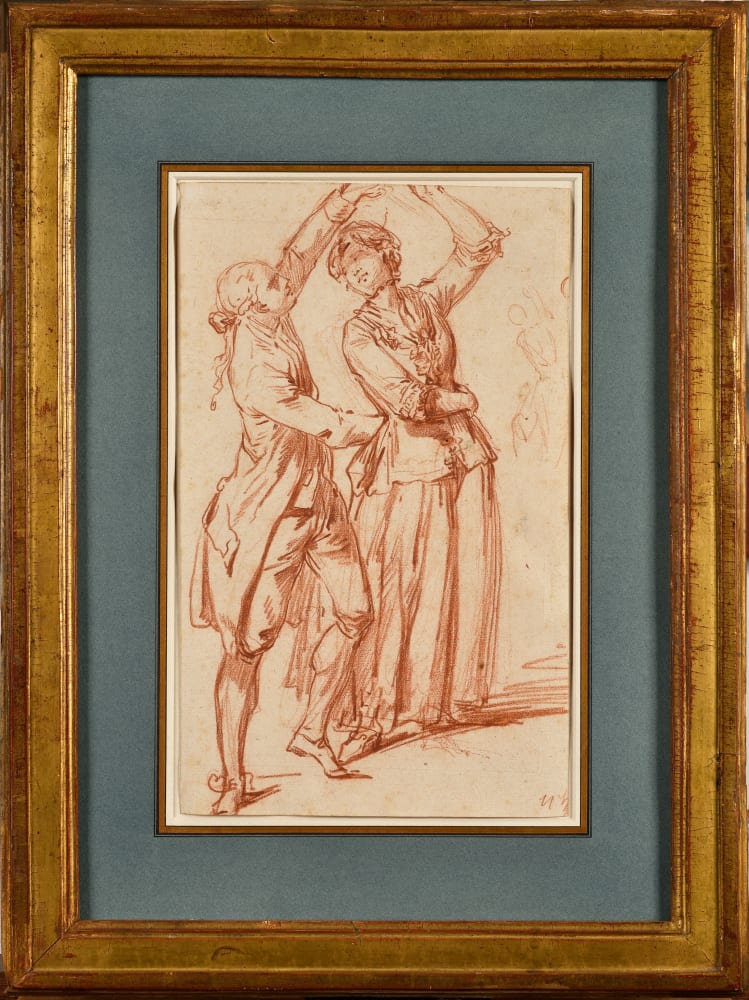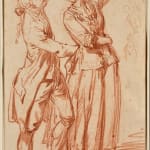Attributed to Charles-Nicolas Cochin the Younger (Paris, 1715 – 1790)
Verso: Black chalk and red chalk
34 x 21 cm
Plus d'images
Provenance
Lucien Wolff, ParisPrivate collection, Paris
This refined drawing in red chalk depicts a couple performing a dance figure—likely a minuet—in a pose of grace and courtly poise. Far from a rustic genre scene, the couple’s attire—a fitted, narrow-skirted coat for the gentleman and a close-fitting jacket (caraco) with a flowing skirt for the lady—suggests an urban, high-society context typical of Parisian salons in the 1760s–1770s.
Executed in red chalk, a favoured medium for its warmth and subtle modelling, the drawing is complemented on the verso with brisk sketches in black chalk and red hatching—evidence of an artist’s working sheet. The treatment combines linear precision with a confident lightness of touch, revealing the hand of an experienced draughtsman.
Although previously offered on the market as "attributed to Hubert Robert", this drawing is more convincingly associated with Charles-Nicolas Cochin the Younger or his immediate circle. Cochin, the King’s principal designer and one of the most accomplished illustrators of his time, was renowned for his refined and graceful red chalk drawings. He worked extensively on court entertainments and publications, notably for the Menus-Plaisirs du Roi. One example of his style can be found in his Allegory on the Life of the Dauphin (Metropolitan Museum of Art, inv. 1993.328), which reveals similar line quality and compositional poise.
The elegance of line, the discreet attention to costume details, and the absence of background—hallmarks of Cochin’s style during the years 1765–1775—are clearly apparent here. Comparable drawings by Cochin housed in the Louvre and the Musée Carnavalet also reveal his control of red chalk in swift, precise strokes combined with subtle shading (see, for example, Louvre, inv. 24363).
The subject of dancing couples was emblematic of the fascination with social entertainments in mid-18th century France. Though this motif may recall François Boucher’s German Dance, engraved by Gilles Demarteau in 1769 (Louvre, inv. 23928 LR), the draughtsmanship here is more focused and restrained, closer to Cochin’s observational sensibility than to Boucher’s sensual exuberance or Robert’s picturesque spontaneity.






